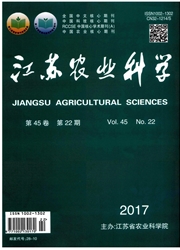

 中文摘要:
中文摘要:
以北疆荒漠绿洲过渡带样地数据为基础,通过半方差分析、分形分析和各向异性分析对5种优势灌木空间分布格局进行了定量研究。结果表明:多枝柽柳各向同性,介于集群与均匀分布之间,异质性弱,对环境异质性适应最强;盐穗木为集群分布,交替存在各向异性,空间分布复杂;白刺呈带状集群分布,异质性程度大,变异曲线变化剧烈;琵琶柴呈自相关很强的集群分布,空间异质性弱;沙蒿呈集群分布,异质性程度大。5种灌木拟合指数模型或球形模型,对干扰的适应性均强;总变异中的随机部分和空间自相关部分影响各异;5种灌木均有明显的空间依赖性;多枝柽柳和琵琶柴在分布区内互补性生态效益明显。
 英文摘要:
英文摘要:
In order to explain the spatial heterogeneity of desert shrubs, the study on the spatial distribution patterns of five dominant shrubs in North Xinjiang desert was conducted by the methods of semi - variance analysis, fraetal analysis and anisotropy analysis based on the field investigation. The results revealed that Tamarix ramosissima was isotropic and had low heterogeneity, and its spatial distribution pattern was between cluster and random distribution, showing best adaptation to the environmental heterogeneity. The distribution pattern of Ha- lostachys caspiea belonged to the cluster distribution with alternating anisotropy and complex spatial distribution. Nitraria tangutorum belonged zonal cluster distribution, which semivariogram curves had violent change and frac- tal dimension was small, influenced seriously by the environment. The special distribution of Reaumuria soongor- ica belonged to cluster distribution with strong autocorrelation and weak spatial heterogeneity. Artemisia destero- rum had high spatial heterogeneity degree( from 60m to 100m) , belonging to cluster distribution. In conclusion, the spatial distribution patterns of five shrubs were fitted with exponential model or spherical model. All shrubs had strong adaptability to disturbance. Random part and spatial autocorrelation occupied important status in total variability. Complementary ecological benefit between Tamarix ramosissima and Reaumuria soongorica within research area was obvious.
 同期刊论文项目
同期刊论文项目
 同项目期刊论文
同项目期刊论文
 期刊信息
期刊信息
